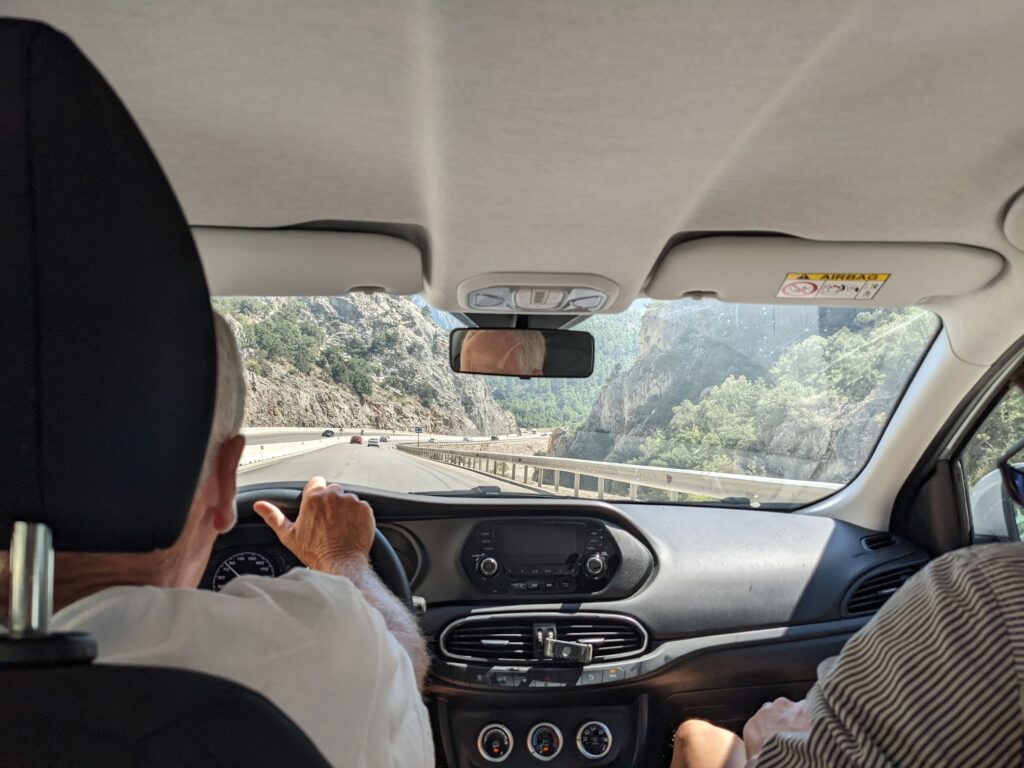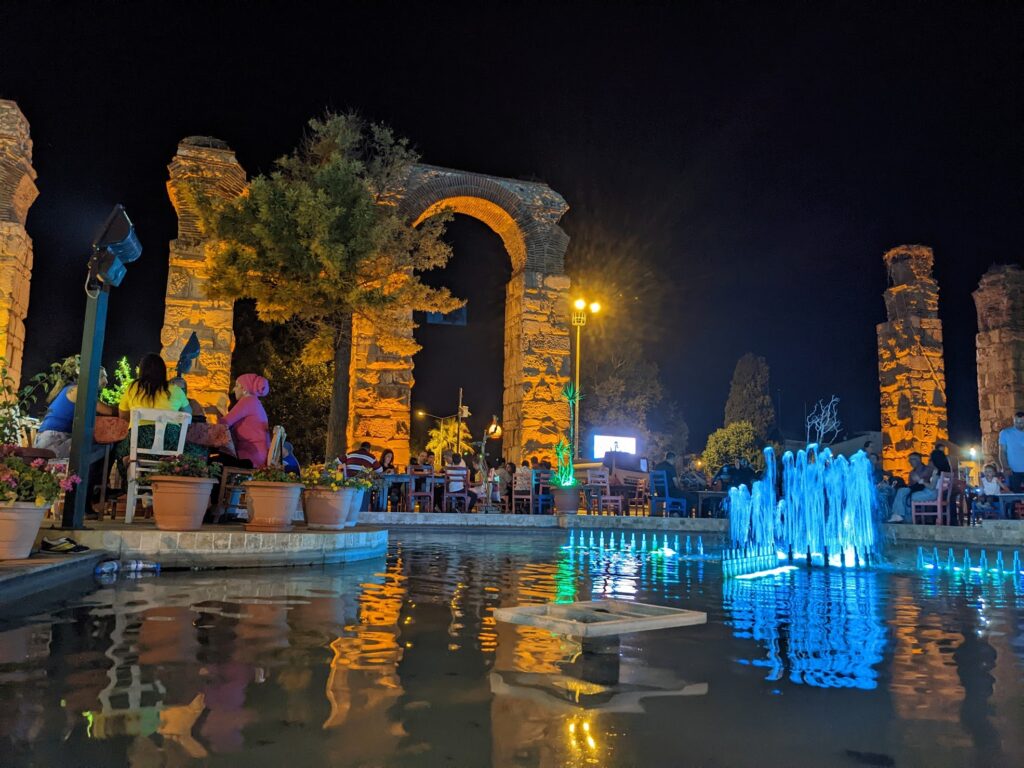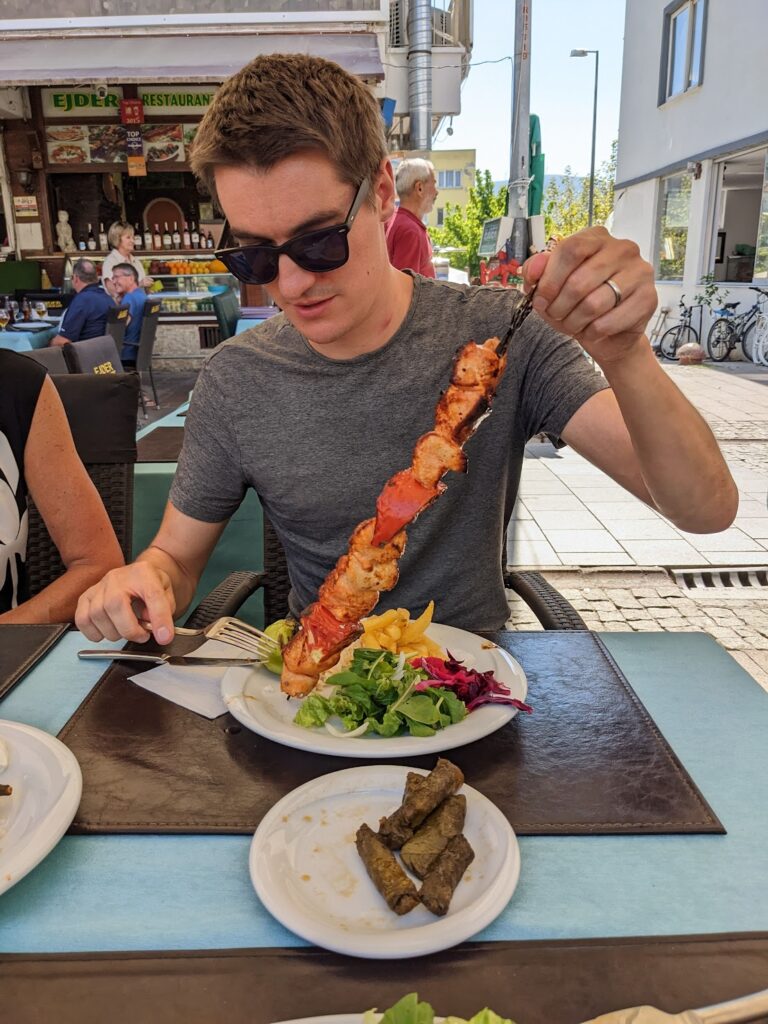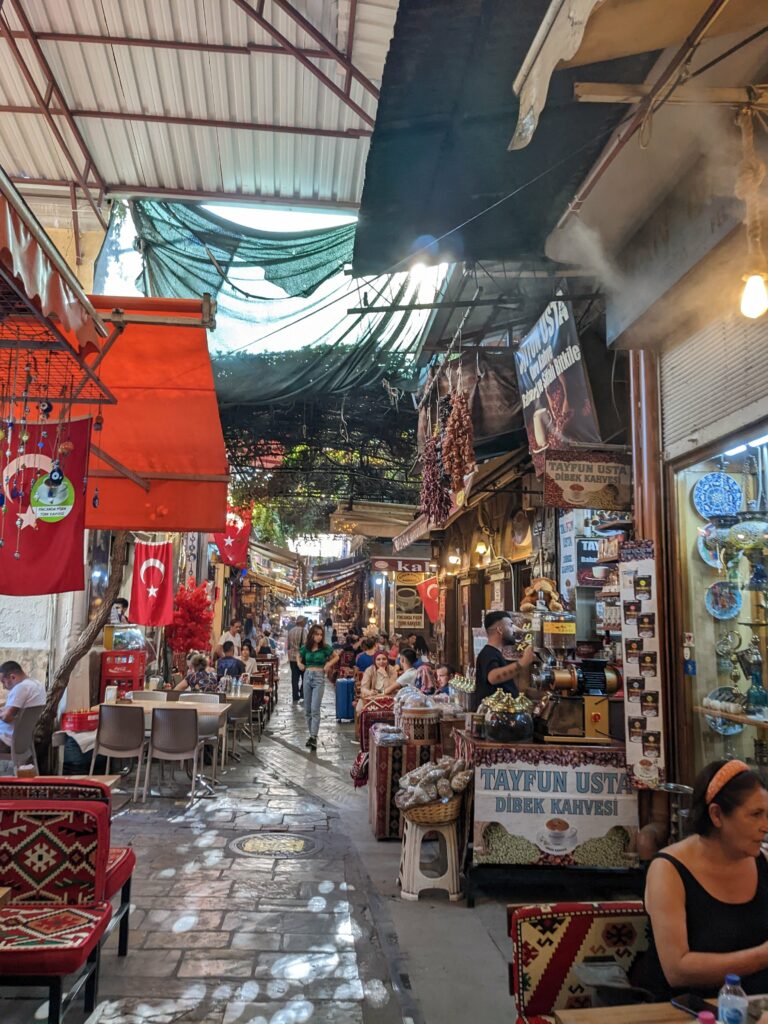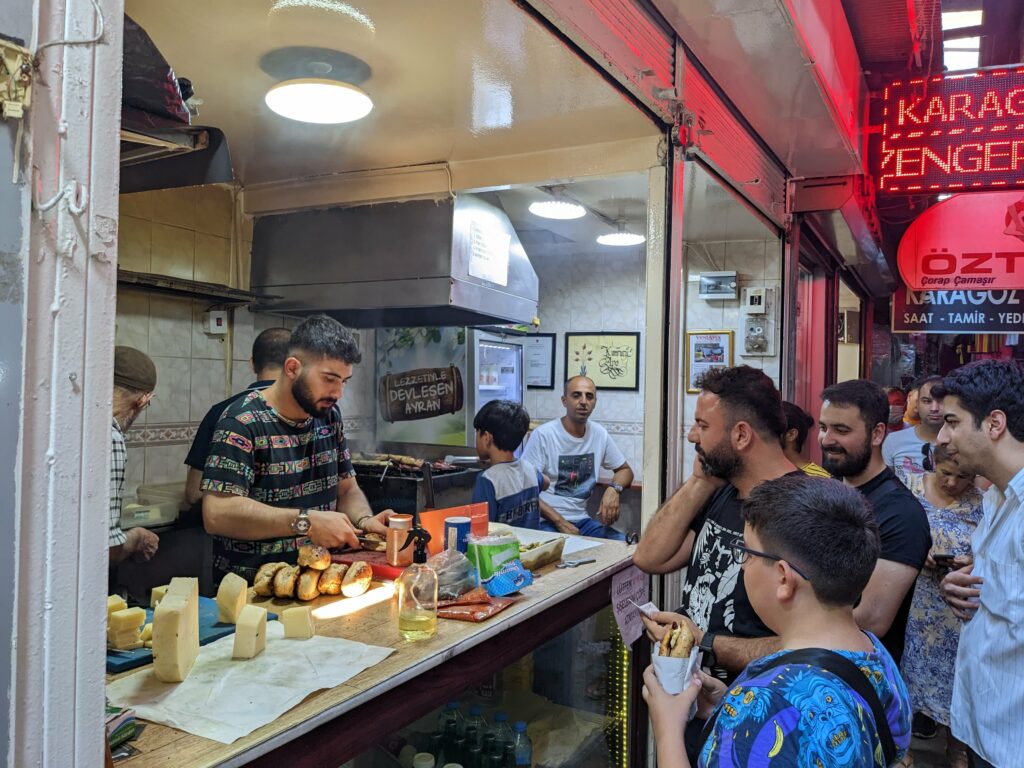This title might be a little misleading! The Lycian Way is a long-distance walking trail snaking 540km along the Mediterranean coast in south-western Turkey, and it’s been on our bucket list of experiences for about ten years. However, we had so much ground to cover on this leg of our trip to Tashkent that we kept scaling back the time available to walk it. In the end, we had a single day to walk one very small section as a taster. Hopefully, we’ll be back one day to complete the rest!
The base for our walk was an Airbnb up in the mountains, and a 10 minute drive along dirt tracks from the nearest stretch of tarmac. The tranquility was absolute, apart from the chorus of frogs and cicadas that welcomed us to the wilderness.

That evening, just as the sky turned dark, Sara alerted us to an orange glow in the v-shaped gap between two mountains, growing brighter by the minute. We’d read a lot about forest fires in the area and for a worrying few seconds we all thought that one had taken hold across the valley. It took a surprising amount of time for us to identify it as a moonrise, which I think was a first for us all. Only afterwards did we realise how lucky we were to be sat in the right spot to see the combination of a full moon, rising in the evening, on a clear night, perfectly framed by the mountains. We couldn’t have planned it any better if we’d tried.
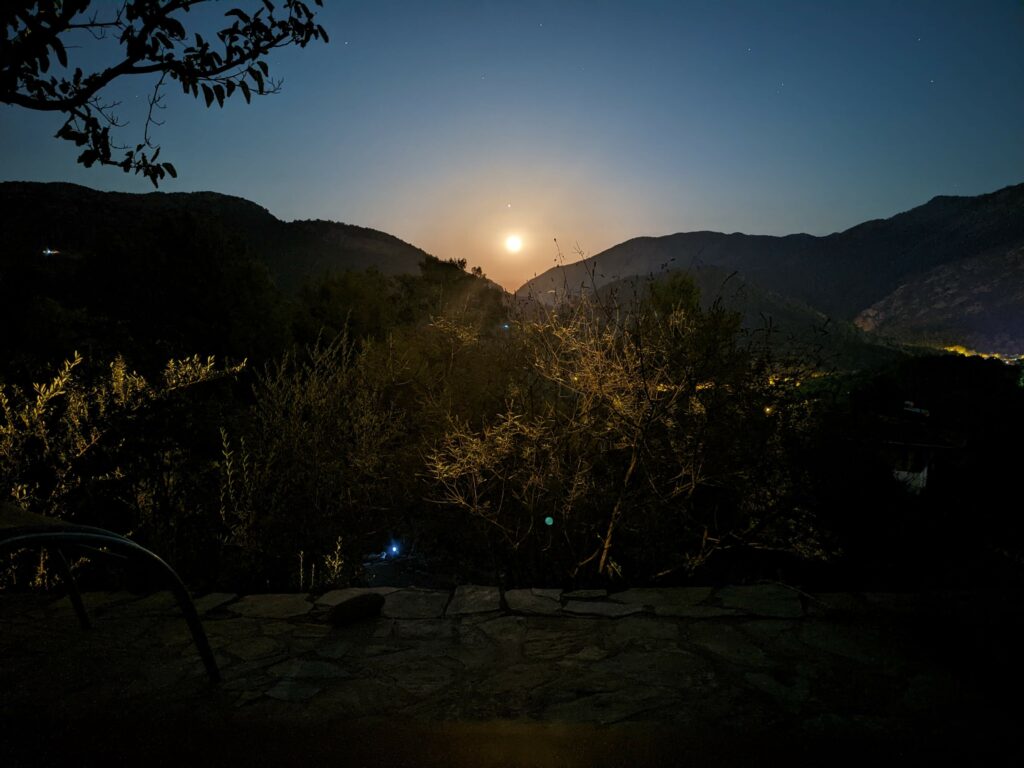
We managed to tear ourselves away from our beautiful (if slightly bizarre) villa for a day’s walking. Our 9.6 km route involved scaling Mount Chimaera, passing a handful of eternally burning fires, and ending on a beach in the village of Çıralı.
Our hike started in the village of Ulupınar, where we followed a dirt track down the mountain through forest and crossed a dry riverbed.
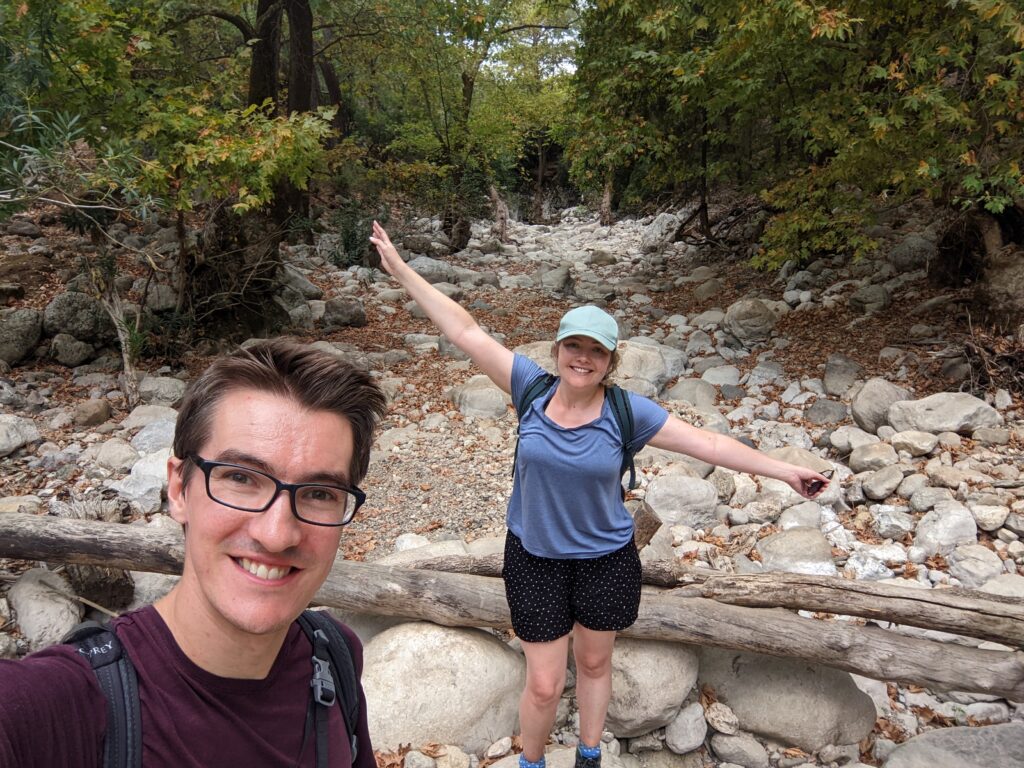
Following the trail was straightforward at this point, and we quickly picked up the Lycian Way’s distinct red and white way-markers.
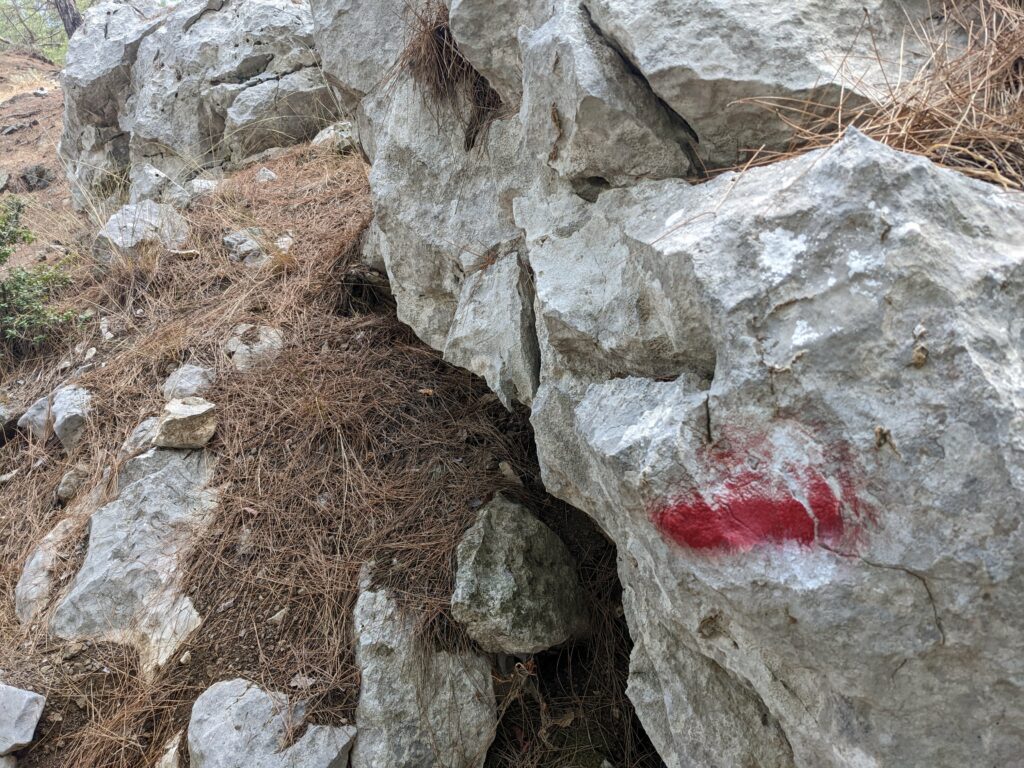
The path then got a lot wilder as it climbed steeply towards the summit of Mount Chimaera, with the terrain growing rockier and the distance between way-markers increasing. Serious kudos to anyone who can spot the way-marker the following photo.
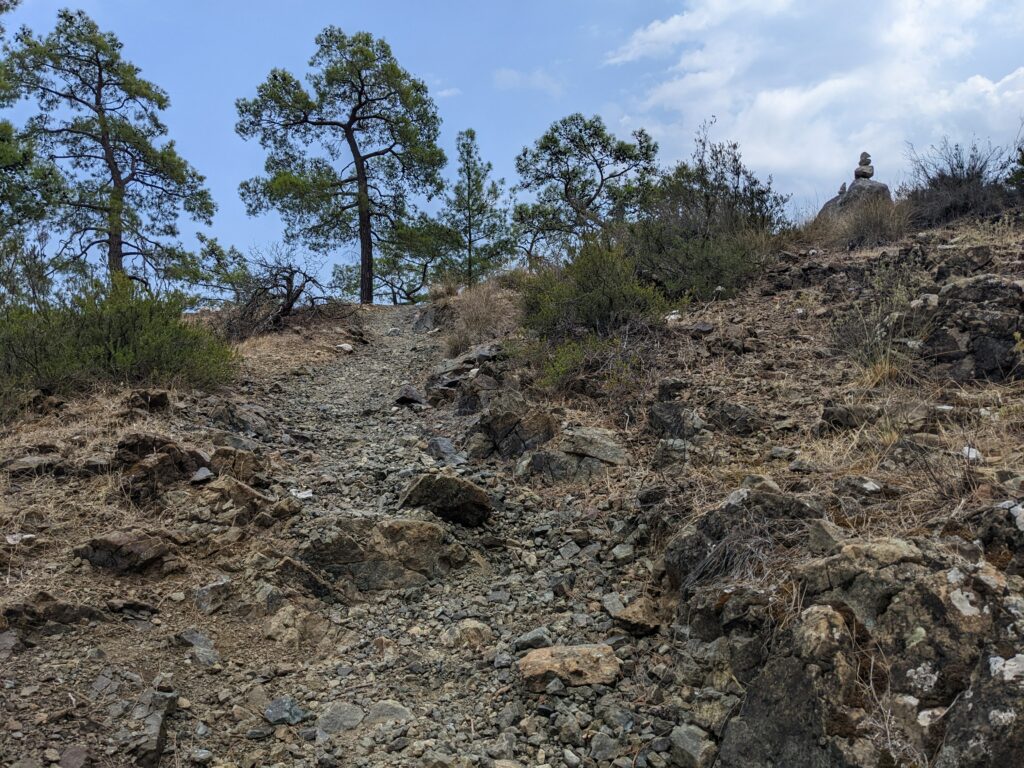
When we reached the top of the mountain and the first set of flames, I mentioned to Sara that I’d had Eternal Flame stuck in my head all morning. It turns out that you can’t make a comment like that without infecting everyone around you (you’re welcome!), and understandably Sara was not best pleased. In retaliation, she made up a song about venomous vipers (about whom we’d been warned) and sang it all afternoon. Well, she sang it until we actually saw a snake slithering extremely quickly across the mountainside, at which point it didn’t seem very funny anymore.
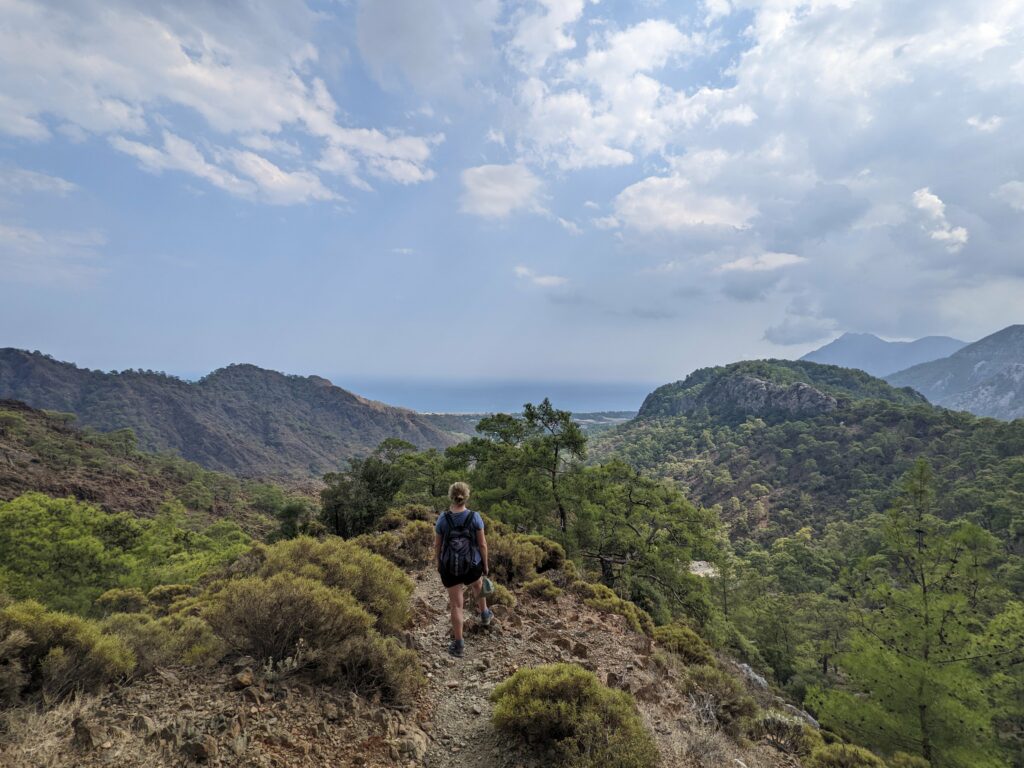
So far, we’d met a grand total of 3 human beings on the trail. The first two were a couple of hikers, and the third was a man herding his goats across the mountain. It felt pretty remote at times, but at least we had the wildlife to keep us company.

The second set of flames were even more impressive. We learned that the fires are fuelled by methane and other gasses which are being emitted from the rock, and apparently have been burning for over 2,500 years!
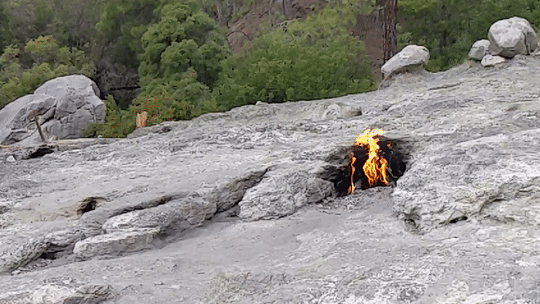
The descent from the lower flames was much more straightforward, with clearly marked steps leading us to the base of the mountain. The path then met a near-deserted paved road, which lead us back into Çıralı village.
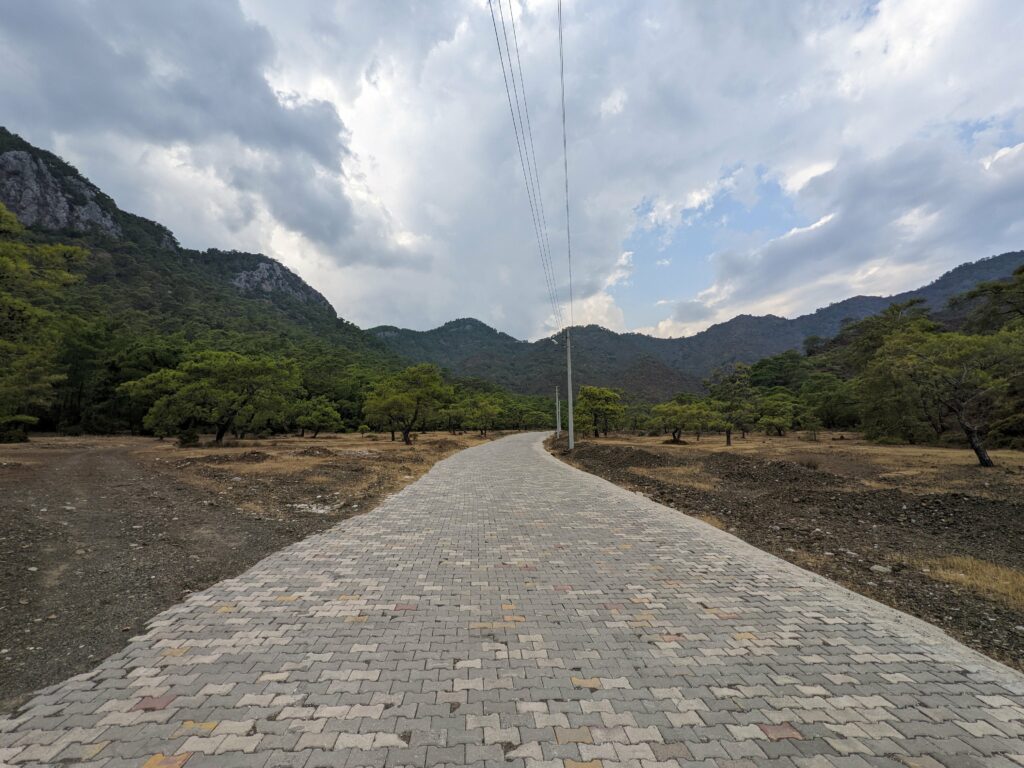
We reunited with Helen & Mick for a victory drink, before swimming in the gorgeously warm sea surrounded by dramatic mountains in almost every direction.
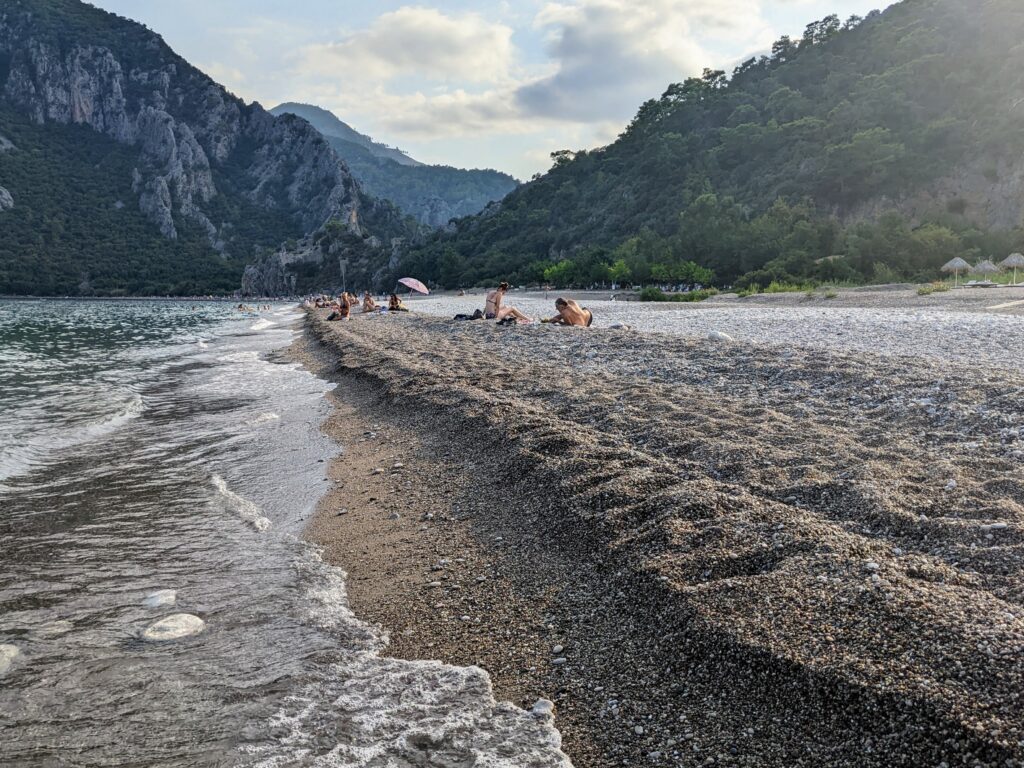
Even the walk back to the car was spectacular. After a short plod along the beach, we joined a boardwalk that followed the Göksu river through the ruins of Olympos just as the sun was setting, casting a stunning golden glow over the meandering river and the ancient city.


The following day it was once again time to move on. This time, our destination was Cappadocia – home to around 100 daily hot air balloon flights and an endless sea of fairy chimneys.
Special thanks to George & Erin for restaurant and cat recommendations, and to Helen & Mick for driving the support vehicle!

